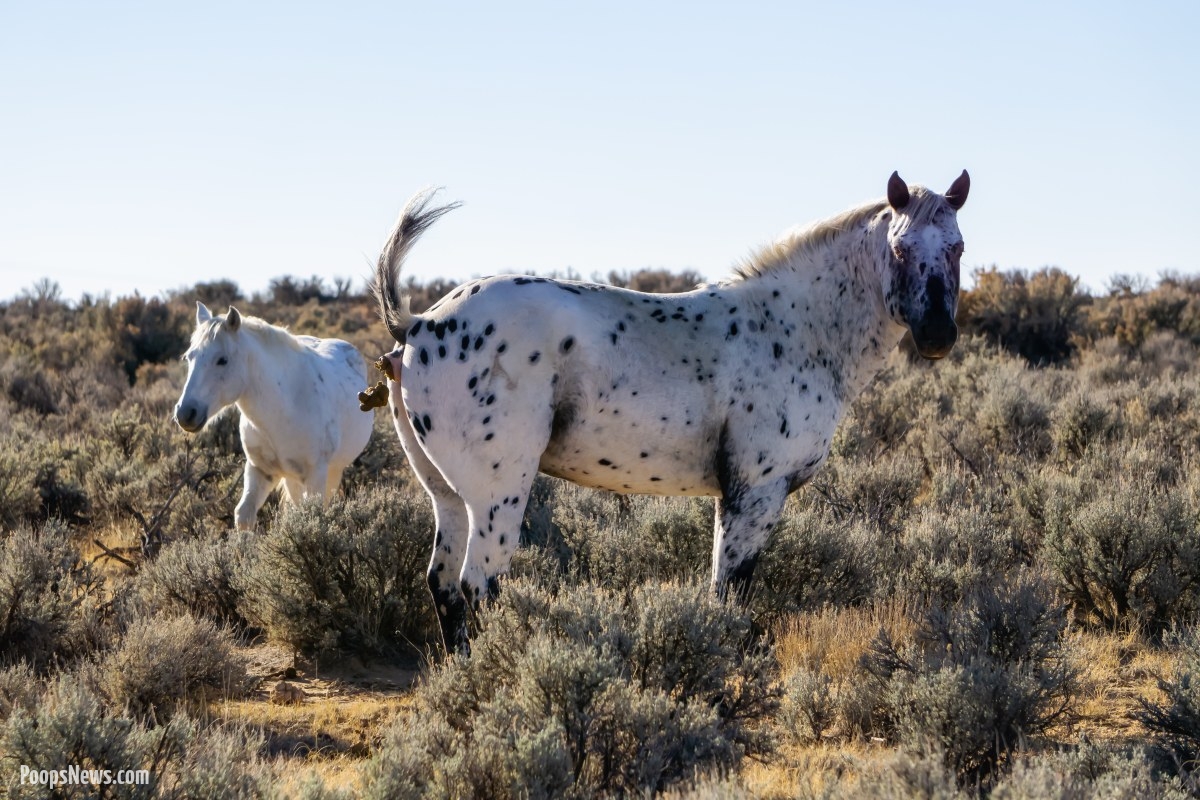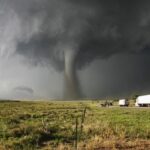Exploring the Wild and Wonderful World of Nature’s Waste
In the vast, untamed wilderness of the animal kingdom, bathroom habits vary as wildly as the creatures themselves. From the way animals relieve themselves to the vital role excrement plays in ecosystems, the study of poop opens a window into the fascinating world of nature’s quirks and adaptations. Yes, that’s right — we’re diving deep into animal poop! But don’t wrinkle your nose just yet; this isn’t just about gross stuff. Animal waste, in many cases, holds the secrets to survival, communication, and even ecosystem health.
Brace yourself for a humorous yet informative journey as we delve into the top 20 facts about toilet habits and the wonderful world of excrement among animals. Trust us, after reading this, you’ll never look at poop — or the natural world — the same way again.
1. Wombats Poop Cubes
Australia’s wombats are renowned for producing cube-shaped poop, a unique feature that helps these animals in marking their territory. Unlike round droppings that might roll away, these cubical feces stay in place, ensuring that the boundaries of their domain remain clear. This curious adaptation comes from a slow digestive process, which allows the formation of these six-sided marvels. Wombats’ intestines have distinct, elastic regions that mold the poop into cubes just before they exit the body. It’s a testament to nature’s ingenuity that such a small creature could evolve to craft such an unusual — and surprisingly functional — form of excrement.
2. Hippos Mark Their Territory With Dung-Spraying Tail Whirls
In the world of the hippopotamus, territorial claims are a messy affair. Hippos, with their imposing size and sharp teeth, have developed an equally dramatic way of marking their land — by spraying their feces. Using their powerful tails, they fling their dung across wide areas. This spinning tail method serves both to warn off rivals and signal their dominance in a particular area. It’s not just random flinging either; hippos are highly strategic, ensuring their scent spreads far and wide. In the wild, this waste-flinging ritual is a vital part of hippo social dynamics, asserting who rules the riverbanks.
3. The Poop-Powered Defense System of Sea Cucumbers
Sea cucumbers might not be the most glamorous creatures of the ocean, but they have a remarkable defense mechanism that utilizes their intestines and waste. When threatened by predators, they expel a significant portion of their internal organs, including their intestines and the waste they contain. This dramatic tactic not only distracts the predator but can also entangle or confuse them. The expelled organs, laden with toxic substances from their digestive process, serve as a decoy while the sea cucumber makes its escape. Remarkably, they regenerate their organs within a few weeks, making this a renewable and highly effective defensive strategy.
4. Penguins Poop With Precision
Penguins, particularly species like the chinstrap and Adelie, are known for their cleanliness and ability to projectile poop with precision. Living in tight colonies, these birds avoid soiling their nests by skillfully directing their waste away. Researchers have studied the force and distance of penguin defecation, uncovering that these birds can launch their poop up to 1.5 meters away, an impressive feat for such small creatures. This pooping behavior plays a crucial role in keeping their nests clean, especially when nesting on rocky, uneven terrain where hygiene is vital for chick survival. Penguins’ waste disposal method is both practical and surprisingly efficient.
5. Beavers Build With Their Own Poop
Beavers are known for their remarkable engineering skills, constructing complex dams and lodges that alter entire ecosystems. However, few know that their building materials include their own poop. As part of their construction process, beavers mix mud, sticks, and feces to fortify their structures, creating strong, waterproof walls. This combination of natural materials helps to insulate their lodges and keep water out. The fecal matter adds an extra layer of durability, especially in keeping out predators or unwelcome intruders. Beavers’ use of their poop in building also shows how resourceful they are in utilizing every available material in their environment.
6. The Glittering Guano of Bats
Bats, with their nocturnal lifestyles and vast colonies, produce significant amounts of guano, or bat poop. But this isn’t just waste — it’s highly valuable, both ecologically and economically. Guano is rich in nitrogen, phosphate, and potassium, making it an excellent natural fertilizer. In fact, bat guano has been used in agriculture for centuries, often referred to as “black gold” due to its ability to enhance crop production. Certain caves with large bat populations have even been mined specifically for guano, showing just how much value this glittering excrement holds. Beyond its use in farming, bat guano is essential in supporting ecosystems, providing nutrients for plants and other organisms.
7. Sloths Use Poop for Communication
Sloths are infamous for their slow pace, but when it comes to bathroom habits, they are even more peculiar. Sloths only descend from the trees once a week to relieve themselves, making this activity one of their riskiest moments. Despite the danger, sloths use this time to communicate with other sloths through scent. The poop they leave behind carries vital information, possibly related to their identity or reproductive status. Some researchers believe that sloths’ bathroom behavior is a form of social interaction, signaling to others nearby about their presence or availability for mating. While they move slowly, their poop speaks volumes in the animal kingdom.
8. Elephants Use Dung for Dietary Studies
Elephant dung is far more than just a massive pile of waste; it serves as an important tool for scientists studying these magnificent creatures. By analyzing the contents of elephant dung, researchers can gain insights into their diet, digestion, and even the health of the environment they inhabit. Elephant dung often contains seeds from the plants they consume, and when these seeds are excreted, they help in the spread of plant species across vast distances. This makes elephants vital to maintaining biodiversity. In some cultures, elephant dung is even used for medicinal purposes, highlighting how this resource is far from being mere waste.
9. Koalas Eat Their Mothers’ Poop
Koalas may seem like adorable, sleepy creatures, but their dietary habits are surprisingly unique — especially for baby koalas, known as joeys. As part of their early development, joeys consume a specialized form of their mother’s poop called “pap”. This substance is critical in helping them transition from their mother’s milk to a diet of tough, fibrous eucalyptus leaves, which are toxic to most animals. Pap contains the necessary bacteria to help break down the leaves, and without it, joeys wouldn’t be able to digest their future meals. While it may seem unappetizing, this poop-eating stage is a life-or-death necessity for young koalas.
10. Rabbits Eat Their Own Poop
Rabbits are efficient herbivores, but their digestive systems require a little help to make the most of their plant-based diet. After they eat, their bodies produce two types of feces — hard pellets and softer cecotropes. These cecotropes are packed with essential nutrients that weren’t fully absorbed the first time around, so rabbits eat them to ensure they extract every possible nutrient. This process, known as coprophagy, is a normal and essential part of rabbit digestion. It might seem strange, but it’s an incredibly efficient way to make the most out of a plant-heavy diet. Without this second round of digestion, rabbits wouldn’t get the nourishment they need to survive.
11. Dung Beetles Navigate Using the Stars
Dung beetles may seem simple, but they have a remarkable ability to navigate using the stars. After forming a ball of poop, they roll it in a straight line, guided by the Milky Way. Scientists discovered this by placing dung beetles in a planetarium, where they observed that the beetles could orient themselves under a starry sky but became disoriented without stars. This ability ensures the beetles can quickly transport their dung away from competitors, making them one of the few animals known to use celestial navigation.
12. Birds Have Multitasking Poop
Birds are incredibly efficient creatures, and this extends to their bathroom habits. Unlike mammals, birds excrete both solid and liquid waste simultaneously. The white part of bird droppings is uric acid, which conserves water and helps keep birds light for flight. This multitasking poop system allows birds to eliminate waste while preserving crucial water resources, a necessary adaptation for their high-energy lifestyle. Furthermore, bird droppings are rich in nutrients, making them important fertilizers for ecosystems, particularly in areas where bird colonies thrive.
13. Capuchin Monkeys Throw Poop in Self-Defense
Capuchin monkeys, known for their intelligence and agility, use poop as a form of self-defense and social communication. When feeling threatened, they will fling their feces at predators or intruders to assert dominance or warn them away. Though it may seem like mischievous behavior, poop-throwing is a highly effective defense mechanism. This tactic not only helps them fend off threats but also plays a role in establishing hierarchy within their groups. By strategically targeting enemies with their feces, capuchins ensure their place in the social order.
14. Panda Poop and Bamboo Puzzles
Giant pandas are iconic for their bamboo-based diet, but what many don’t realize is how inefficiently they digest it. Spending up to 14 hours a day eating, pandas only digest about 20% of the bamboo they consume. The rest is excreted in large, fibrous piles of poop. Despite having the digestive system of a carnivore, pandas have adapted to survive on bamboo, though the process is far from efficient. Scientists have studied panda poop extensively to understand their digestive challenges, revealing how these gentle giants thrive on such a limited diet.
15. Fish That Poop Out Sand
Parrotfish play a crucial role in maintaining the health of coral reefs, and one of their unique contributions is pooping sand. Using their powerful beaks, parrotfish grind up coral to feed on the algae inside, excreting the indigestible material as sand. This process produces tons of sand each year, significantly contributing to the formation of tropical beaches. Without parrotfish, many beaches would lack the fine, soft sand that tourists enjoy. The constant cycling of coral through parrotfish helps balance reef ecosystems and keeps algae growth in check.
16. The Complicated Poop of a Turkey
Wild turkeys provide an unusual insight into their biology through their poop, which can indicate their sex. Male turkeys, or toms, typically produce J-shaped droppings, while females, or hens, leave more spiral-shaped piles. This distinction, caused by differences in their anatomy, helps researchers and hunters identify turkey populations in the wild. In addition to sex identification, turkey droppings also reveal information about their diet and habitat, offering clues about the overall health and movements of turkey flocks in different environments.
17. Cows and Methane Emissions
Cows are well-known contributors to methane emissions, a potent greenhouse gas. This is largely due to their digestive process, where bacteria in their stomachs produce methane as they break down tough plant material. Cow poop is also a source of methane as it decomposes. While cow dung is commonly used as a fertilizer, helping to enrich soil, the methane it emits poses a significant environmental challenge. Reducing methane emissions from livestock is a priority for scientists working on climate change, with some studies suggesting that altering cow diets could lower methane output.
18. Otters Poop to Build Community
River otters use their poop, known as “spraint”, to communicate with other otters and establish social bonds. Spraint is deposited in specific locations to mark territory, announce presence, or signal mating readiness. Otters use the musky scent of their spraint to convey vital information about their identity, age, and sex to other otters in the area. This communal use of poop helps maintain social order within otter populations, ensuring that territories are respected and that potential mates can find each other through scent trails.
19. Turtles Poop Through Their Cloacas
Turtles have a unique multi-purpose opening called a cloaca, which they use for excretion, reproduction, and even respiration in some species. When turtles poop, both waste and urine are expelled through the cloaca. Aquatic turtles can also absorb oxygen through their cloacas, allowing them to stay submerged in water for extended periods, especially during hibernation. This remarkable adaptation makes turtles highly efficient in using one organ for several essential life functions, showcasing their evolutionary success in various environments.
20. Termites Use Poop for Construction
Termites are master builders, and one of the key materials they use in constructing their enormous mounds is their own poop. Termite feces serve as a form of cement, binding together soil particles to create sturdy, weather-resistant structures. These towering mounds provide ventilation and temperature control for the termites living inside, ensuring the colony’s survival in harsh environments. The use of feces in construction not only strengthens termite mounds but also recycles nutrients back into the ecosystem, demonstrating the resourcefulness of these tiny architects.
As you can see, poop isn’t just a byproduct of digestion — it’s an integral part of survival, communication, and even engineering in the animal kingdom. From cube-shaped wombat droppings to dung beetles navigating by the stars, the world of animal excrement is as fascinating as it is varied. These facts not only reveal the adaptability and ingenuity of different species but also highlight the importance of something as seemingly mundane as poop in maintaining ecological balance.
Next time you spot an animal in the wild, take a moment to appreciate the marvel of nature’s waste management system. After all, behind every pile of poop is a story waiting to be told.





